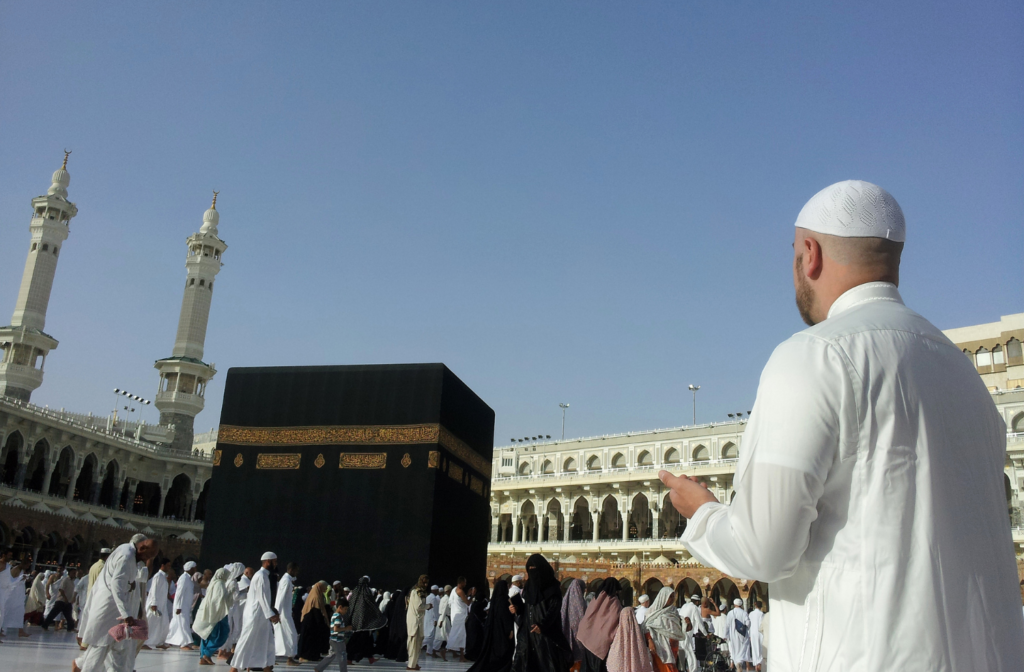Hajj, one of the most significant and spiritually important pilgrimages in the world, brings millions of Muslims to Makkah each year. But alongside the spiritual intensity comes a serious physical challenge—extreme heat. Temperatures in the holy city often soar above 45°C during the Hajj season, posing health risks for pilgrims, especially the elderly and people with disabilities.
To combat this, Saudi Arabia has introduced an innovative infrastructure upgrade: heat-reflective roads and cooled pedestrian walkways. Designed by the Saudi Roads General Authority (RGA), these heat-busting solutions aim to make the pilgrimage not only safer but significantly more comfortable.
This isn’t just a nod to comfort—it’s part of a strategic move aligned with the Saudi Vision 2030 plan, targeting better infrastructure, sustainability, and public safety.
????? ?????? ???????? ?????? ?. ??? ??????? ????? ??? ?????? #?????_????????_???????_??????
— ?????? ?????? ????? (@RGAsaudi) May 29, 2025
?? ??????? ???????. #??????_????
?#???_???????? pic.twitter.com/1iB6DED3Ko
A Strategic Cooling Innovation That Works
The Roads General Authority began experimenting with cooled surfaces back in 2023. Since then, the project has expanded rapidly, with more than 84,000 square metres of cooled surfaces now laid out in Arafat—one of the key Hajj sites.
What makes these roads truly innovative is their use of recycled and locally sourced materials, including flexible rubber asphalt. These materials have been proven to:
- Lower surface temperature by up to 12°C
- Reflect 30–40% more sunlight, especially during early morning hours
- Minimize the urban heat island effect, which can trap heat in crowded areas
This upgrade goes beyond comfort. It helps reduce the demand for high-powered cooling systems, which not only lowers energy consumption but also reduces overall air pollution in the area.
4,000 Metres of Comfort and Accessibility
Among the most impactful upgrades is a 4-kilometre-long pedestrian path leading up to Mount Arafat. This isn’t just any walkway—it’s an accessible, cooled pathway purpose-built for pilgrims with disabilities and their caretakers.
The surface is smooth, the temperatures are lower, and vibration is significantly reduced, making it easier for wheelchairs and mobility aids to glide across. For pilgrims who often walk long distances in challenging conditions, this path offers a much-needed reprieve from physical strain.
It’s thoughtful, inclusive, and a solid example of infrastructure meeting human need.
Soft Walkways That Ease the Strain on Every Step
If you’ve ever walked barefoot on sun-heated asphalt, you know how punishing it can be. Multiply that feeling over several kilometres, and you’ll understand the urgency behind Saudi Arabia’s newest solution: soft, rubberised walkways.
Now covering 16,000 square metres between Namira Mosque and Arafat Train Station, these impact-absorbing surfaces act like a cushion for tired feet. According to studies from the Road Research Centre, the flexible rubber used here reduces walking fatigue, joint strain, and potential injury—especially important for elderly pilgrims who may be walking these paths under extreme physical and climatic stress.
Green Corridors That Breathe Life Into Makkah
In addition to cooled surfaces, Makkah’s roads are also being transformed into green corridors. The Roads General Authority has introduced thousands of new trees, plants, and shaded areas along key routes. These green installations:
- Provide natural cooling through evapotranspiration
- Improve air quality and reduce dust
- Create rest stops where pilgrims can recover from long walks
These trees are not just decorative—they’re carefully selected desert-tolerant species that require minimal water, aligning with the kingdom’s sustainability goals under the Saudi Green Initiative.
The result? Cooler streets, cleaner air, and a more human-centric Hajj experience that acknowledges both spiritual needs and physical well-being.
Pilgrim Safety at the Heart of It All

The central goal behind these upgrades is simple: protect the millions of pilgrims who visit the holy sites each year. By reducing exposure to extreme temperatures, lowering the risk of heatstroke, and offering accessible walkways for people with disabilities, Saudi authorities are redefining what safe pilgrimage looks like.
The Public Security Department and Ministry of Hajj and Umrah have also backed these efforts by installing heat monitoring stations and deploying mobile hydration units along the newly upgraded roads. This holistic approach ensures not just infrastructural change, but also real-time response capabilities during the pilgrimage season.
Paving the Way for Future Pilgrimages

These upgrades are not one-off projects. They are part of a long-term national strategy aimed at elevating Makkah’s infrastructure in line with the Vision 2030 plan.
Here’s what’s expected next:
- More cooled and shaded routes across Mina and Muzdalifah
- Expansion of smart road technologies with heat sensors
- Continued use of recycled and sustainable materials for construction
- More inclusive mobility routes for elderly and disabled pilgrims
It’s a future-forward vision that balances innovation with tradition—ensuring that the centuries-old journey of Hajj remains both sacred and safe for generations to come.
A Spiritual Journey, Now Safer Than Ever
Saudi Arabia is proving that even age-old religious rituals can benefit from modern engineering and environmental consciousness. By introducing heat-reflective roads and cooled walkways, the Kingdom is not only protecting millions of pilgrims from the elements—it’s also creating a blueprint for how other pilgrimage cities around the world can evolve.
For the millions planning their Hajj in 2025 and beyond, this means a more manageable, inclusive, and spiritually enriching experience.
Read More:
- Labubu Takes Over Abu Dhabi—Now Available on Deliveroo – Social Kandura
- Dubai: Major Delays Expected on Two Key Roads Until June 3 – Social Kandura
Stay updated with the latest local news, culture stories, and events happening across the UAE and the region. Follow Social Kandura for more on what’s shaping the future of the region.











